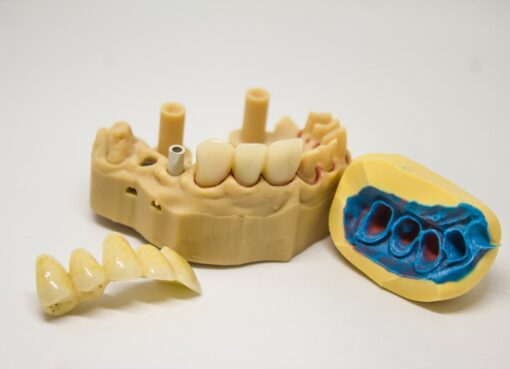Understanding the Dangers of Cavity Between Teeth

A cavity between teeth, also known as an interproximal cavity, is a small hole or pit that forms in the enamel of the tooth, usually in the areas where two teeth meet. This type of cavity can be particularly problematic because it is often difficult to detect and treat in the early stages. When food particles and bacteria get trapped between the teeth, they can lead to the formation of plaque, which can then erode the enamel and cause a cavity to develop. If left untreated, the cavity can progress and affect the inner layers of the tooth, leading to pain, infection, and potential tooth loss.
A cavity between teeth can be challenging to spot with the naked eye, as it is often hidden from view and may not cause any noticeable symptoms in the early stages. This is why regular dental check-ups and professional cleanings are essential for detecting and treating interproximal cavities before they become more serious issues. It is important to be aware of the causes, signs, and symptoms of interproximal cavities in order to prevent and address them effectively.
Key Takeaways
- A cavity between teeth is a small hole or pit that forms in the enamel of the tooth, usually caused by bacteria and plaque buildup.
- Causes of cavity between teeth include poor oral hygiene, frequent consumption of sugary or acidic foods and drinks, and lack of fluoride.
- Signs and symptoms of a cavity between teeth may include tooth sensitivity, pain when biting or chewing, and visible holes or pits in the affected teeth.
- Complications of untreated cavity between teeth can include tooth decay, infection, and even tooth loss.
- Preventing cavity between teeth involves practicing good oral hygiene, limiting sugary and acidic foods and drinks, and getting regular fluoride treatments.
Causes of Cavity Between Teeth
There are several factors that can contribute to the development of a cavity between teeth. One of the primary causes is poor oral hygiene, which can lead to the accumulation of plaque and bacteria between the teeth. When food particles and sugars are not properly removed through brushing and flossing, they can create an environment for bacteria to thrive and produce acids that erode the enamel. Additionally, consuming sugary and acidic foods and beverages can also contribute to the formation of interproximal cavities.
Another common cause of interproximal cavities is inadequate flossing. When individuals do not floss regularly or effectively, they may leave behind food particles and plaque between their teeth, which can lead to the development of cavities over time. Furthermore, certain dental conditions, such as misaligned teeth or crowded teeth, can make it more difficult to clean between the teeth, increasing the risk of interproximal cavities. It is important to address these causes by practicing good oral hygiene, maintaining a healthy diet, and seeking professional dental care to prevent and treat interproximal cavities.
Signs and Symptoms of Cavity Between Teeth
In the early stages, a cavity between teeth may not cause any noticeable symptoms, making it challenging to detect without a dental examination. However, as the cavity progresses, individuals may experience a range of signs and symptoms that indicate the presence of an interproximal cavity. One common symptom is tooth sensitivity, particularly when consuming hot, cold, or sweet foods and beverages. This sensitivity occurs as the cavity erodes the enamel and exposes the inner layers of the tooth to external stimuli.
Another sign of a cavity between teeth is visible discoloration or staining on the surface of the tooth. As the cavity grows larger, it may become more noticeable as a dark spot or pit on the affected tooth. In some cases, individuals may also experience mild to severe toothache or discomfort when biting or chewing. If left untreated, the cavity can progress and lead to more severe symptoms, such as persistent pain, swelling, and even abscess formation. It is important to be aware of these signs and symptoms and seek prompt dental care if they arise.
Complications of Untreated Cavity Between Teeth
| Complication | Description |
|---|---|
| Tooth Decay | If left untreated, the cavity can continue to grow and lead to tooth decay. |
| Toothache | The cavity can cause pain and discomfort, especially when eating or drinking hot or cold items. |
| Infection | If the cavity reaches the pulp of the tooth, it can lead to a painful infection. |
| Tooth Loss | In severe cases, untreated cavities can lead to the loss of the affected tooth. |
Untreated cavities between teeth can lead to a range of complications that can affect both oral and overall health. As the cavity progresses and reaches the inner layers of the tooth, it can cause inflammation and infection in the pulp tissue, leading to a painful condition known as pulpitis. If left untreated, this infection can spread to the surrounding tissues and result in an abscess, which can cause severe pain, swelling, and even systemic health issues.
Furthermore, untreated interproximal cavities can lead to the destruction of the tooth structure, potentially resulting in tooth loss. This can have significant implications for oral function, aesthetics, and overall well-being. In addition, the bacteria and inflammation associated with untreated cavities can contribute to gum disease and other oral infections, further compromising oral health. It is crucial to address interproximal cavities promptly to prevent these complications and preserve oral health.
Preventing Cavity Between Teeth
Preventing cavities between teeth involves practicing good oral hygiene habits and making healthy lifestyle choices. Regular brushing with fluoride toothpaste helps remove plaque and bacteria from the surfaces of the teeth, including between them. It is important to brush at least twice a day for two minutes each time to effectively clean all areas of the mouth. Flossing is also essential for removing food particles and plaque from between the teeth where a toothbrush cannot reach. Individuals should aim to floss at least once a day to maintain optimal oral hygiene.
In addition to oral hygiene practices, maintaining a balanced diet low in sugary and acidic foods and beverages can help prevent interproximal cavities. Limiting consumption of sugary snacks and drinks reduces the amount of sugar available for bacteria to produce acids that erode the enamel. Drinking water and eating crunchy fruits and vegetables can also help clean the teeth and stimulate saliva production, which aids in neutralizing acids in the mouth. Regular dental check-ups are crucial for detecting and addressing interproximal cavities in their early stages before they progress and cause complications.
Treatment Options for Cavity Between Teeth

The treatment for a cavity between teeth depends on the severity of the condition. In the early stages, when the cavity is small and has not reached the inner layers of the tooth, a dental filling may be sufficient to restore the affected tooth. The dentist will remove the decayed portion of the tooth and fill the space with a suitable filling material, such as composite resin or amalgam. This helps prevent further decay and restores the function and appearance of the tooth.
If the cavity has progressed to affect the inner layers of the tooth, more extensive treatment may be necessary. In such cases, a root canal procedure may be recommended to remove the infected pulp tissue and seal off the root canal to prevent further infection. In severe cases where the tooth structure is significantly compromised, a dental crown may be placed over the affected tooth to provide strength and protection. It is important to seek prompt dental care for interproximal cavities to determine the most appropriate treatment option for each individual case.
Importance of Regular Dental Check-ups
Regular dental check-ups are essential for maintaining optimal oral health and preventing interproximal cavities from progressing unnoticed. During a dental examination, the dentist can visually inspect the surfaces of the teeth for signs of decay or discoloration that may indicate the presence of a cavity between teeth. Dental X-rays may also be taken to detect cavities that are not visible to the naked eye, particularly in between teeth where they are often hidden from view.
In addition to detecting interproximal cavities, regular dental check-ups allow for professional cleanings to remove plaque and tartar buildup from all areas of the mouth, including between teeth. This helps prevent cavities from forming and progressing by maintaining a clean and healthy oral environment. Furthermore, regular dental visits provide an opportunity for individuals to receive personalized oral hygiene advice and guidance on maintaining optimal oral health at home.
In conclusion, a cavity between teeth can pose significant challenges for oral health if left untreated. By understanding the causes, signs, symptoms, complications, prevention strategies, treatment options, and importance of regular dental check-ups for interproximal cavities, individuals can take proactive steps to maintain healthy teeth and gums. Practicing good oral hygiene habits, making healthy lifestyle choices, seeking prompt dental care when needed, and attending regular dental check-ups are essential for preventing interproximal cavities from causing long-term damage to oral health.
If you’re interested in learning more about cavities in between teeth, you should check out this article on skyhighrenders.com. This article provides valuable information on the causes of cavities in between teeth and offers tips on how to prevent them. It’s a great resource for anyone looking to improve their dental health and avoid the discomfort of tooth decay.
FAQs
What is a cavity in between teeth?
A cavity in between teeth, also known as an interproximal cavity, is a small hole or decay that forms in the enamel of the tooth between two adjacent teeth.
What causes cavities in between teeth?
Cavities in between teeth are typically caused by the accumulation of plaque and bacteria in the hard-to-reach areas between teeth. This can be exacerbated by poor oral hygiene, a diet high in sugary or acidic foods, and lack of regular dental check-ups.
How can cavities in between teeth be prevented?
Preventing cavities in between teeth involves maintaining good oral hygiene practices, such as regular brushing and flossing, using fluoride toothpaste, and visiting the dentist for regular check-ups and cleanings. A balanced diet low in sugary and acidic foods can also help prevent cavities.
What are the symptoms of a cavity in between teeth?
Symptoms of a cavity in between teeth may include tooth sensitivity, pain when biting or chewing, visible holes or pits in the affected area, and potential discoloration of the tooth.
How are cavities in between teeth treated?
Treatment for cavities in between teeth typically involves removing the decayed portion of the tooth and filling the space with a dental filling. In more severe cases, a dental crown or root canal may be necessary. Regular dental check-ups can help catch cavities early and prevent further damage.
Leave a Reply
You must be logged in to post a comment.



Leave a Comment